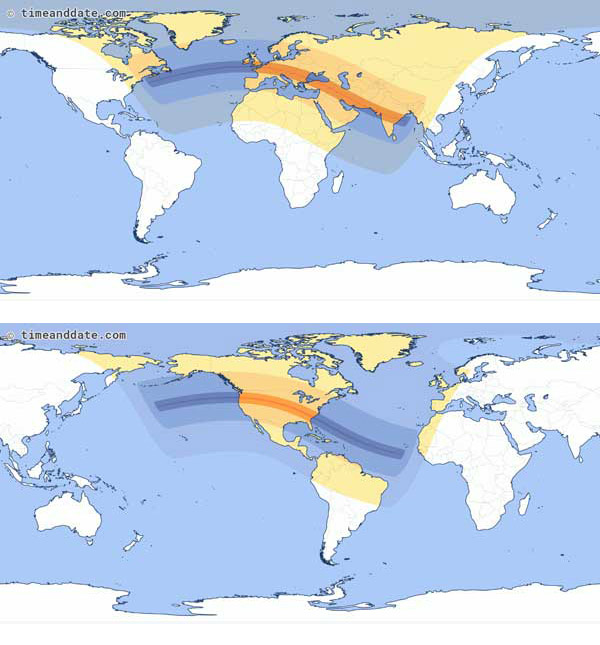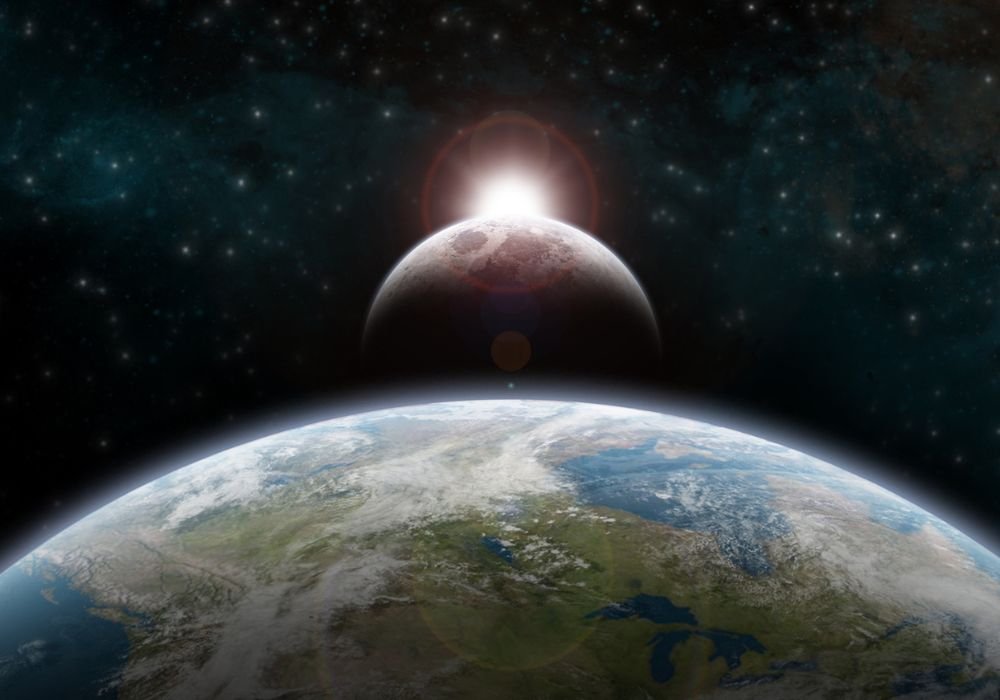The astronomical phenomenon known as Babylonian astronomers observed the Saros cycle thousands of years ago — It is said that the discovery occurred even before the birth of Jesus Christ. It is a complex phenomenon that explains more about the periodicity of solar and lunar eclipses that repeat in a recurring cycle, which was revealed through observation of the sky by the ancients.
The course includes The relative movement of the Earth, Moon, and Sun, and every time an eclipse occurs, the Sun and Moon have similar positions and characteristicss. There are even some small changes, but in general, it is possible to study the next cycle based on the information from the previous cycle.
“Any two eclipses separated by a Saros cycle share a very similar geometry. They occur on the same node with the Moon, at roughly the same distance from Earth and at the same time of year.” Since the Saros period is not equal to a full number of days, its biggest drawback is The subsequent eclipse will be visible in different parts of the globe,” the US National Aeronautics and Space Administration (NASA) describes on its About the Eclipse page.
To explain more about What is the Saros cycle and how does it predict eclipses?We collected information from experts and scholars in this field. paying off!
Saros cycle and eclipse
In an official publication, NASA explains this The Saros cycle is a period of about 6,585.3 days, or 18 years, 11 days, and 8 hours (223 synodic months). – A lunar month is the period from one new moon to the next, or approximately 29.5 days. Eclipses separated by this period usually share very similar geometries, however, there may still be some small differences.
The Saros cycle occurs when the Earth, Sun, and Moon move and return to approximately the same positions relative to each other, thus recurring solar and lunar eclipses. For example, if it is observed today, about 6585.3 days from now a similar eclipse will also occur.
Three similarities between eclipses in the Saros cycle
- The eclipse occurs at approximately the same distance from Earth;
- They also occur at the same time of year;
- They usually appear with the same characteristics, and at the same node in the moon’s orbit.
Because this period does not occur in a perfectly equal period of days, eclipses that follow the Saros cycle can be seen in different regions of the world. Furthermore, it does not last indefinitely because the three lunar months do not exactly fit together.
Despite their differences… Astronomers can use the Saros cycle to predict the location of an eclipse with reasonable accuracy. In other words, if a solar eclipse is observed in a certain region of the planet, it is possible that the next eclipse will be in a similar geographic location to the previous one.

The first part of the map above shows the total solar eclipse that occurred near Europe on August 11, 1999; At the bottom, the map shows an eclipse that occurred on August 21, 2017 in North America. In other words, about 6,585 days after the 1999 event, another almost identical event occurred.
Either way, there are some noticeable differences in the image; Firstly, The 2017 solar eclipse has been shifted one-third of its original path; The second difference is that it occurred much further south than the 1999 phenomenon.
“Because the relative positions of the objects change slightly after each saros, an eclipse cycle ends after a series of saros. A saros lasts between 1,226 and 1,550 years, and includes 69 to 87 eclipses. When one series ends, another is born. On average, 42 are triggered series in parallel at a given time,” as explained on one page of Encyclopedia Britannica.
It is important to note that this period was more used by ancient astronomers, as there were no technological tools that could help them at that time. There are no details about the astronomer who made the discovery or the exact date of the first observation of the cycle. Here lies the question: How were the Babylonians able to detect astronomical phenomena without using any modern technology?
Did you like the content? Stay tuned for more astronomical curiosities like this, here at TecMundo and take the opportunity to learn how to safely photograph the “ring of fire” formed by a solar eclipse.

“Wannabe internet buff. Future teen idol. Hardcore zombie guru. Gamer. Avid creator. Entrepreneur. Bacon ninja.”

